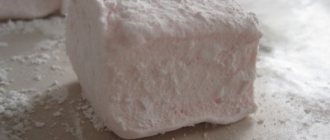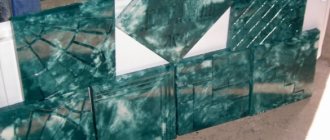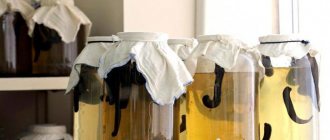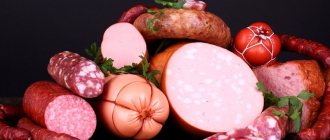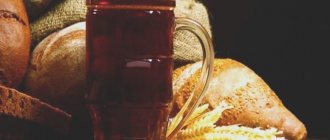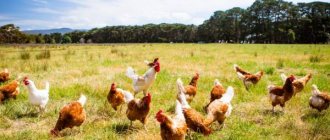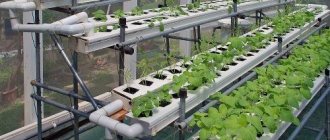Sugar production from beets as a profitable business: features
In most cases, it is profitable for a manufacturer to produce food products, especially when it comes to essential products, which include sugar.
In most cases, it is profitable for a manufacturer to produce food products, especially when it comes to essential products, which include sugar.
To make your business successful, consider its specifics:
- raw materials - if you locate the plant where beets are grown, transportation costs are reduced and the cost of the finished product is reduced;
- investments in plant construction and equipment - to launch an enterprise from scratch, large investments are needed. You can save money at the start if you buy an automated line. This will eliminate the need to hire a large staff. If it is not financially possible to build a workshop, consider renting;
- legalization of business. It will take 2-3 months to complete all the paperwork. Compliance of the finished product with all standards must be documented.
Sugar market analysis
Sugar is an essential commodity, the demand for which is not subject to decline. Since 2011, sugar production in Russia has been growing rapidly. This is due to the reconstruction of leading factories and an increase in their productivity. There is a positive trend in sugar consumption per capita; the current figure is 19.06 kg per year. On average, each resident of Russia eats about 20 kg of sugar annually, not including the product as part of other purchased goods. The leading sugar producing countries are shown in the photo below.
Russia is among other countries and ranks second in the supply of beet sugar after the United States.
How do you get sugar?
The sugar production process depends on the raw material and may vary. In addition to beets, it is made from palm sap, sugar cane, certain varieties of rice, and sorghum stalks.
Domestic consumers are more familiar with sugar obtained from beets. This is a quality product that is obtained by:
- cleaning;
- crushing;
- thickening;
- crystallization.
Sugar production technology
Before starting a project, study the technological process.
When producing sugar from sugar beets, it includes the following steps:
- Extraction of raw materials - the beets are washed, peeled and dissolved into chips. The crushed product enters the diffuser. Using boiling water, a diffusion liquid is obtained. This is not yet finished sugar - the juice contains about 15% of the useful substance;
- Cleaning - the mixture is separated from chips and foreign impurities. The juice is mixed with lime milk. The resulting mass is subjected to two-stage purification in special equipment;
- The juice is converted into syrup - excess moisture is removed by evaporation;
- Crystallization of the syrup - the mass is passed through a centrifuge;
Other types of sugar
In Russia and most CIS countries, a beet product is available and produced. You can find cane sugar on store shelves. In addition, in the world there are the following species that are used as food:
- Maple sugar is traditionally produced in Canada from the sugar maple tree using the sap. It is also used to produce maple syrup, which is popular in Western countries.
- Palm sugar, jagre, is made in Asia from the sweet juice of the fruit cobs of palm trees. Sugar is produced from coconut, date palms, areng and other species.
- Sorghum sugar is a product extracted from sorghum stalks primarily in China. It later became widespread in North America during the Civil War. Production is complicated by the high content of mineral salts in the raw materials.
Step-by-step plan on how to open a sugar factory
Competent guidance to action is the key to success. Make a business plan and follow all its points.
Market analysis
The main advantage of the sugar business is that it is not tied to the season. The product is in constant demand. Sugar consumption by the population increases every year. Despite the fact that our country is one of the three world leaders in sugar production, the business can be considered promising.
The disadvantage of the project is difficulties with the flow of raw materials. Nine out of ten kilograms of the finished product are made from imported raw materials. This automatically increases the cost of sugar. If it is possible to purchase from domestic farmers, the problem with competition will be solved.
To make granulated sugar, only one component is required: as a rule, it is beets, which is very convenient. Considering that the product is in demand and the costs of setting up a business are not too high, the project has every chance of a quick payback.
Business registration
Any business starts with obtaining permits. To be able to work with wholesalers and legal entities, register an LLC. An additional benefit is that you can attract founders and receive a tax refund.
To register an LLC you will need:
- applicant's passport;
- Articles of association;
- bank account;
- a copy of the duty payment receipt.
Get permissions:
- sanitary service;
- fire supervision and control authorities;
- local executive authorities;
- conclusion of Rospotrebnadzor
Note! Each region has its own requirements for food production, so the package of documents can be expanded.
Study and take into account the GOST requirements for the following points during production:
- technical production conditions;
- testing methods;
- sucrose calculation method;
- sugar production.
Rent
Choose a spacious room: to place large equipment, you need a lot of space. Additionally, a warehouse for raw materials and a warehouse for finished products will be required.
If you want to maintain the quality of sugar, consider a ventilation system. Remember, the product is afraid of moisture - the room must be dry.
Zone the usable area:
- manufacturing facility;
- warehouses;
- staff room;
- bathroom, shower;
- office.
Note! The production premises are subject to strict sanitary requirements. For interior decoration, choose materials that can be washed.
Cane sugar production
History shows that the first methods of extracting sugar from cane were invented in India. Today, the production of cane sugar is in many ways similar to the technological process for producing beet products.
However, there are significant differences:
1. The first step in the production of cane sugar is pressing on rollers instead of extraction. By treating the stems with water, the equipment is able to extract about 90% of all the sugar contained in plant stems. The squeezed juice on the presses goes into the pulp trap, and then into the juice measuring tanks.
2. The second difference is the method of purifying the juice. Processing of cane sugar is carried out with a small amount of lime, and in beet sugar production, the juice is subjected to pre-defecation, defecation and saturation, as well as a second saturation, where the amount of lime reaches 3% of the weight of the beets. In the production of cane sugar, the proportion of lime is 0.07% of the total weight of the stems.
Sugar production equipment
Sugar production is a complex technological process, each stage of which requires specific equipment.
To prepare the raw materials, you will need a washing line. Its main units:
- beet washing device;
- garbage trap;
- moisture separator;
- sand collector;
- hydraulic conveyor;
- lift.
Production Line:
- Dryer;
- screw;
- diffuser;
- scales;
- machine for crushing beets into chips;
- separator conveyor.
To clear the juice:
- settling tank;
- heating filter;
- defecator;
- saturator.
To evaporate the liquid and obtain the finished product:
- centrifuge;
- evaporator;
- vacuum chamber;
- drying;
- cooler;
- vibrating sieve;
- vibrating conveyor
Glucose production
Glucose is the end product of starch hydrolysis and is widely used in the food industry, medicine, chemistry, and biotechnology. When obtaining glucose, a deeper hydrolysis of the starch suspension is carried out, obtaining hydrolysates with a high glucose content. The sugared syrup is evaporated and sent for crystallization. The product obtained as a result of solidification of purified and boiled hydrolysates is called starch sugar, and the isolated glucose crystals are called crystalline glucose. The latter must contain at least 99.5% of reducing substances (in terms of dry matter).
How much money do you need to start a business?
To launch a plant from scratch, large investments are needed at the start.
Approximate calculation:
- equipment - 3,000,000 rubles;
- raw materials for a month of work - 400,000;
- rent - 60,000;
- salary - 140,000;
- advertising - 100,000.
Investments at the start will amount to 3,700,000 rubles.
In order for the enterprise to operate without downtime, you need to invest monthly in the following expense items:
- replenishment of raw materials - 400,000;
- wage fund - 140,000;
- rent - 60,000;
- utility bills - 20,000;
- advertising - 30,000.
Total - 550,000 rubles per month to cover current expenses.
It is also necessary to provide a reserve fund, since the enterprise will not immediately reach payback.
Technology and equipment at the sugar factory
We will briefly describe how sugar is produced from the root crop in special factories (you can learn about how sugar beets are used and what is obtained during its processing here). Production at the plant takes place in several technological stages.
- Preparatory stage (cleaning and washing line). Beets brought directly from the field or from storage may contain stones, fragments, and pieces of metal. This is dangerous for the equipment. The beets may just be dirty.
In order to avoid loss of sugar during washing, the water temperature is controlled - it should not be above 18 degrees. After washing, the beets are rinsed with chlorinated water - at the rate of 10-15 kg of bleach per 100 tons of beets. Then the beets are fed onto the conveyor. There she is blown with a strong stream of air. This removes remaining water and light adhering impurities.Equipment:
- hydraulic conveyors (simultaneously with feeding, the beets are washed from dirt);
sand traps, stone traps, tops traps;
- water separators;
- washing machines.
- Grinding. How is it made? The prepared sugar beets are weighed and sent to the storage hopper. From here, under its own weight, it is supplied for crushing to centrifugal, drum or disc beet cutters. The width of the resulting chips is in the range of 4-6, and the thickness is 1.2-1.5 millimeters.
Equipment:- conveyor with magnetic separator;
beet cutter;
- scales;
- Diffusion. In diffusion plants, the main process occurs - the leaching of sugar from the crushed material. The chips are treated with hot water and release sugar and other soluble substances into the solution. This process occurs at a temperature of about 70-80 degrees in a slightly acidic environment.
An environment rich in sugars is a fertile environment for the development of microorganisms. This leads to product damage and more dangerous consequences - for example, possible explosions. Therefore, during the diffusion process, a formalin solution is periodically added to the apparatus.Its final concentration is small - 0.02% of the total mass of the product, but is sufficient to suppress active microflora. The product that is obtained at this stage is diffusion juice. It is a cloudy liquid that quickly darkens in air. It contains a large amount of pulp.
The pulp is separated on pulp heads. The second product is beet pulp. It is pressed and either sent directly to livestock feed or dried.
Equipment:- diffusion installation (screw or rotary);
pulp dryer
- Purification of diffusion juice. The juice obtained after diffusion is a complex mixture of many soluble organic substances of the most diverse nature. To clean the juice from these impurities, a defecation process is carried out.
The process with this unappetizing name is carried out in two stages. It comes down to treating the juice with lime (milk of lime). The reaction of the solution reaches a pH value of 12.2 - 12.4, that is, the solution becomes alkaline.In this case, organic acids are neutralized and proteins precipitate. Other unwanted impurities also react. The reaction products either precipitate immediately or are removed at the next stage - the saturation stage. The term “saturation” refers to the well-known process of “carbonation,” that is, saturation of a solution with carbon dioxide. In this case, a fine suspension of calcium carbonate (ordinary chalk) is formed, which absorbs coloring impurities.
Then the solution is filtered and saturated again. Before this, if necessary, repeated bowel movements are sometimes performed. Next, the resulting clear but still colored solution is treated with sulfur dioxide (sulfur dioxide). This process is called sulfitation. At the same time, the alkaline reaction of the solution decreases and its discoloration occurs. The viscosity of the syrup also decreases.
Equipment:
- defecation apparatus;
filter with heating device;
- saturator;
- sulfitator;
- settling tank
- Condensation and crystallization. The juice obtained after sulfitation is an ordinary unsaturated solution of sucrose. If you thicken a solution to a saturated state, then, as you know from a school physics course, the process of crystallization will begin.
The resulting crystals will begin to precipitate. This is what happens in vacuum devices. There, the solution, previously evaporated to a state close to saturated, begins to boil at reduced pressure and condenses to a supersaturated state. The process of mass crystallization begins.The precipitated sugar crystals are separated in centrifuges and carried through several more stages of final processing. There they lighten and turn into the familiar, well-known granulated sugar.
Equipment:
vacuum device;
centrifuge;
- evaporation units with a concentrator.
The sugar yield from 1 ton of root vegetables after processing is approximately 100-150 kg . The spread of indicators depends, not least of all, on the agricultural technology of growing sugar beets and weather conditions in the current year (read more about where beets grow, what climate and soil they “like” here).
A factory indicator of production efficiency is the sugar extraction coefficient. It shows the ratio of the mass of sucrose in the finished product (granulated sugar) to the mass of sucrose in the feedstock. Typically it is approximately 80%.
Possible profit
The cost of one ton of the finished product is approximately 40 thousand rubles. If the enterprise produces 25 tons of sugar per month, the net profit will be at least 200,000 rubles.
It will be possible to achieve full payback no earlier than in 1.5-2 years.
Receive additional income from sales:
- molasses;
- pulp;
- molasses.
If you approach the matter wisely, you can get an additional 10-12% profit from selling production waste.
Chemical composition of sugar beet
The sugar beet root contains 75% water and 25% dry matter.
The average sucrose content is 17.5%. It ranges from 15d to 22.5% and depends on the variety, growing conditions, harvesting methods, and storage. The composition of insoluble organic substances (5%) includes hemicelluloses 1.3%, pectin substances 2.4%. in the composition of nitrogenous organic substances (1.2%) - protein' 0.7%; beatine – 0.2. amino acids – 0.2%; nitrogen-free organic substances include hydrogen sugar – 0.12, org. nic acids – 0.50%; mineral composition, converted to oxides: K-O – 0.20%; CaO – 0.07, Na20 – 0.04; P2Os -0.07%, etc.
Risk analysis
The sugar production business is practically a win-win. The only risk is dependence on the raw material base. Since raw materials are mainly exported from abroad, supply disruptions and downtime are possible.
An additional risk factor is competition. In this industry it is extremely high. To avoid going bankrupt, control the quality of the product and use bright packaging. Position your product creatively.
A granulated sugar production workshop is an economically viable project that requires large investments. Expect that your investment will pay off within 1.5-2 years.
Features of starch production
Starch, sugar products based on it (molasses, dextrins, crystalline glucose), modified starches are widely used in the food industry and other sectors of the national economy. The main raw materials for their production are potatoes and corn. The technology for producing starch and starch products from them is different.
Potato tubers contain up to 18.2% starch.
Potatoes received for production are washed to remove dirt and other impurities, and then crushed. In this case, the cells of potato tubers are destroyed and starch grains are released. Starch released from cells is called "free". The mushy mixture “potato porridge” consists of “free” starch, broken cell walls (pulp), starch remaining in unbroken cells (“bound” starch), and cell sap. Cell sap (solids content 3.5-5%), containing protein, nitrogen-free organic compounds, sugars, minerals, is separated in centrifuges. This operation must be carried out as quickly as possible, since the amino acid tyrosine contained in the cell sap is oxidized under the influence of the enzyme polyphenol oxidase to form colored compounds that reduce the quality of the finished starch. Free starch is washed out from the porridge remaining after separation of the cell sap. The forming starch suspension (starch milk) is separated from the pulp. The starch suspension is purified (refined), removing the impurities remaining in it, and washed repeatedly with water, separating the starch grains. The moisture content of raw starch is 40-52%, which is then further processed to produce dry starch.
Corn grain contains up to 70% starch and is the main raw material for its production. To obtain starch, corn grain is soaked for 48-50 hours in a 0.2% solution of sulfurous acid at 48-50 °C. The grain swells, softens, and the bonds between its components, protein and starch, weaken. The shells become permeable, the humidity of the grain increases to 40-45% and J/J of the soluble substances of the grain passes into the “key” water. Enzyme inactivation occurs. The soaked grain along with starch milk is sent for crushing. Its purpose is to separate the grain into the jaws, release the embryo and release the maximum amount of starch. As a result of crushing, it is possible to isolate up to 90-97% of the germ from which corn oil is obtained. The remaining fiber is separated from the remaining corn porridge and free starch and gluten are isolated. Pure corn starch is dehydrated to a moisture content of 13%.
A variety of products obtained from starch are widely used in the food industry. These include starch hydrolysates (starch syrup, starch syrups, glucose), modified products based on hydrolysates (glucose fructose syrups) and products of modification of the starch itself (modified starches).
Starch hydrolysates are products of partial hydrolysis of starch with dilute acids, enzymes, or both.
During hydrolysis (saccharification), starch is destroyed and products with different molecular weights (dextrins, maltose, glucose) are formed. By controlling this process, you can obtain the products needed for the food industry and nutrition. Their composition, and therefore their properties and ways of use, are different. The depth of hydrolysis is assessed by the content of reducing substances and is conventionally expressed in glucose units (the percentage of D-glucose in the dry matter mass of the product). Industrial products of incomplete hydrolysis of starch - molasses. They are used as an anti-crystallizer in the production of caramel, jam, in baking, in canning, in the production of soft drinks, and ice cream. Caramel molasses contains 38-40% of reducing substances by weight of dry matter, low-sugar molasses - 30-34%, glucose - 44-60%.
Financial component of business
Opening a sugar production plant is a promising business idea. But it is important to take into account that its creation requires a significant amount of start-up capital, therefore, in order for such an enterprise not to go bankrupt in the future and to make a profit, even at the stage of its design it is important to correctly assess the economic efficiency of its potential activities. To do this, it is necessary to determine the cost of opening and maintaining a business, the amount of future income and its payback period.
Cost of opening and maintaining
The size of the initial investment for starting a sugar production business depends on the chosen method of organizing it:
- If you plan to buy a ready-made mini-plant, then this will require at least 30 million rubles. In addition, to this amount it is also worth adding the costs of purchasing raw materials, advertising, obtaining permits and possible repairs, the amount of which can vary from 1 to 5 million rubles.
- For beginning entrepreneurs, the best option is to rent a suitable premises, renovate it and separately purchase production lines. So, if you plan to open a small sugar production, the output of which will be up to 30 tons per month, then the required starting capital will reach about 5 million rubles.
When calculating the expenditure side of the project, it is also necessary to take into account the amount of current costs, which will include rent, utility bills, employee wages, purchase of raw materials, advertising and taxes. For mini-production it can reach up to 1 million rubles per month.
Amount of future income
Today, the average wholesale cost of one ton of sugar is about 40 thousand rubles. Therefore, the amount of future income from the project, taking into account that the line is operating to produce 30 tons of finished products per month, will reach approximately 1.2 million rubles.
Payback period
The monthly profit of a start-up production is 200 thousand rubles. This means that the capital invested in starting a business, provided that the premises for the workshop are registered for a long-term lease, will pay off in at least two years of uninterrupted operation.
To develop activities and increase the amount of revenue, and therefore net profit, over time it is worth taking care of expanding your business by increasing the range of finished products. Even before the initial investment pays off, it is possible to supplement production with special equipment, which will allow, in addition to granulated sugar, to produce refined sugar, powder and raw sugar.
How to get the product at home?
Let’s say right away that it’s unlikely to be possible to prepare the usual refined sugar at home. But sugar syrup is not difficult to prepare. This will be a real natural product made with your own hands. The most simple equipment is suitable for this.
Required:
- arbitrary amount of sugar beets;
- enamel dishes (pots, basins);
- meat grinder, knife, wooden spatula;
- gauze or other cloth for filtering.
How homemade sugar is made:
- Sort the beets, remove roots and damaged areas. Do not remove the skin!
- Rinse.
- In its entirety, place in a pan of boiling water and cook for an hour.
- Drain the water. Let cool slightly and remove the skin from the warm beets.
- Grind with a meat grinder or knife, whichever is preferable. The cut plates should be no thicker than 1 mm.
- Place the chopped beets in a canvas bag and place under a press. Place a basin for the flowing juice. If there is no press, you can squeeze out the juice manually, twisting the bag, as when squeezing clothes.
- After the first squeeze, pour the pulp with hot water (not boiling water) in a volume approximately equal to half the volume of the beets, let it stand. Place the beets on a sieve and let the liquid drain into a bowl with the previously squeezed juice. Squeeze out the grounds again.
- Heat the resulting juice to 70-80 degrees and filter through double gauze.
- Evaporate the filtered juice on the stove to the desired thickness. In this case, it is advisable to use wide and flat, enameled or tinned dishes.
- Properly prepared syrup has the consistency of liquid honey. It is stored, like honey, for a very long time.
The syrup obtained during evaporation must be constantly stirred with a wooden spatula - it burns easily.
From 5 kilograms of sugar beets, about 1 kg of syrup is obtained , or, in terms of conversion, 600 grams of pure sugar.
Getting solid sugar
The syrup must be carefully boiled down in the same way as sugar is boiled down to make homemade candy. Pour the boiled syrup into flat metal molds. Place in a cool place. There the syrup will quickly cool and crystallize. Then all that remains is to remove it from the mold and chop it into pieces of the desired size.
Evaporation of moisture
It is produced in two stages using special equipment. To produce sugar at the first stage, it is important to obtain a thick syrup with a dry matter content of 65-70%. The resulting syrup undergoes additional purification and is again subjected to an evaporation procedure, this time in special vacuum devices. It is necessary to obtain a viscous thick substance with a sucrose content of 92-93%.
If you continue to evaporate the water, the solution becomes supersaturated, crystallization centers appear and sugar crystals grow. The resulting mass is called massecuite.
The boiling point of the resulting mass is 120 °C under normal conditions. But further boiling is carried out in a vacuum (to prevent caramelization). Under conditions close to vacuum, the boiling point is much lower – 80 °C. At the stage of evaporation in a vacuum apparatus, this mass is “alloyed” with powdered sugar. What stimulates crystal growth.
Legal registration of business
To register a business, you need to decide on the form of ownership. This can be either an LLC or an individual entrepreneur. But keep in mind that when choosing an individual entrepreneur, you will not be able to work with large companies. It is more profitable to open an LLC right away, especially if you plan to expand.
The form of tax payment can be either the simplified tax system or the UTII. An accountant will tell you which option is more profitable specifically in your case.
To open this business you will need to collect a number of permits from:
- environmental service;
- fire inspection;
- SES.
Also, the list of permits may vary slightly in different regions. It is better to find out the full list in advance from the relevant authorities.
Another important point is that finished products must comply with all specialized state standards (GOSTs).
The OKVED code that is needed for sugar production is 10. 81. If, in addition to sugar, you are planning to produce other products, then be sure to indicate the appropriate codes when registering so that you do not have to register everything again in the future.
Step-by-step plan for starting a business
To start such a large-scale project, you need to take the following steps:
- Study the sugar production market;
- Study the market of raw materials for the enterprise;
- Based on the first two points, select the location and premises for the future plant;
- Purchase equipment, carry out all necessary equipment for production;
- Select personnel for work;
- Work out the future contractual framework with both suppliers of raw materials and buyers of finished products.
- Draw up an action plan for advertising the product.
Putting production into operation
There are several ways to organize and run a plant.
- Purchase a ready-made mini-plant. However, then it is very important to know the date of opening and commissioning of the plant. If this happened a long time ago, the equipment will be unusable, even if it is in working condition. It is best to invite a specialist to evaluate it. Such an enterprise can cost up to two million dollars. If the enterprise opened after 2000, its price will increase to five million or more.
- Organization of the plant from scratch. In such situations, a new production line must be purchased. The price of such equipment depends on its production capacity:
- equipment for 10 tons per day – 10-20 thousand dollars;
- equipment for 15 tons every day - 100 thousand dollars;
- equipment for 50 tons per day – 200 thousand dollars.
Advantages and disadvantages of this business
The main disadvantage of this business is its significant dependence on the places where raw materials grow. In the Russian Federation, most products are made from sugar beets, the cultivation centers of which are concentrated in the Central, Volga and Southern districts. Thus, transport costs increase significantly for producers from other regions.
The basic advantage lies in the single-component nature of the product - the entrepreneur only needs to find one or two responsible suppliers to ensure uninterrupted supply to the enterprise. In addition, the level of sugar consumption is high and the organizational costs are relatively low, allowing for a quick return on investment.
How to register correctly
Next, let's look at registration issues. If you want to do business seriously, you need to go through the tax registration procedure and obtain the necessary permits from the relevant authorities. How can I register a sugar shop? There are two options: register as an individual entrepreneur; register as an LLC. We recommend registering as an LLC, since this is still a fairly serious production that will operate for a long time and in the future it is possible to expand/sell the entire business.
Attention:
registering as an individual entrepreneur is simpler and cheaper, but an LLC provides greater opportunities and reduces risks in case of bankruptcy of the company.
By releasing different types of sugar, you will increase sales
To register as an LLC, you will have to spend about 10 thousand rubles to do everything turnkey, but at the same time you will receive a large number of advantages. First, you can open a business with a partner and protect your investment. Secondly, an LLC is liable exclusively with the property of the company, while an individual entrepreneur is liable with all property. Thirdly, large counterparties prefer to work with LLCs, since it is considered that this is a serious business, while an individual entrepreneur is something frivolous and can disappear at any time. Fourthly, a sugar production plant in Russia can be sold entirely, whereas for individual entrepreneurs this option is not possible.
In addition to registering with the tax authorities, you will need to find a premises that meets the requirements of the sanitary and epidemiological station and Rostekhnadzor. The requirements are standard: the presence of sewerage and water supply, heating, electricity, ventilation system, ceiling height of 3 meters, concrete floors and walls finished with non-combustible materials. More detailed information about the standards can be found in the SES, but you will still have to contact them to organize a check for compliance with the requirements. You will also need a permit from the fire department, so check their recommendations as well. In general, it may take 2–3 months to prepare the premises and obtain permits to open.
Since sugar is a food product, it must meet the requirements of GOST. Carefully study the state standards for this product so that there are no problems when marketing it. Your equipment on which sugar will be produced must also have certificates of quality and compliance so that there are no claims from inspectors. You will need the following standards: TU Sugar beet R 52647-2006, Test methods R 53036-2008, Methods for determining sucrose 12571-86, Sugar production R52678-2006.
Expansion of production
Most often, young production is focused on the production of granulated sugar, since this is the most popular type of product. Once production is established, the range can be expanded.
Rafinated sugar
First of all, refined sugar production is added to the main line. A Chinese installation with a capacity of 150-200 kg per shift costs approximately 2 million rubles, a Turkish one – up to 7 million rubles. You also need to purchase automatic packaging equipment, which costs at least another 600 thousand rubles.
This sugar can be made in two types:
- pressed: granulated sugar is processed in a centrifuge, pressed, dried and then chopped into cubes of a given size;
- cast: a mass of sugar is loaded into special molds and left until it hardens, after which it is poured several times with pure sugar and washed. This removes the molasses. After this, the pieces are taken out of the molds, dried and cut into cubes of the required parameters.
Cane sugar
Its production is similar to the production of a beet product with some differences:
- The extraction stage is replaced by squeezing the soaked stems on special rollers. This allows you to extract 90% of the sucrose contained in the cane. The juice goes into the pulp trap, then is processed on juice meters.
- Juice purification stage. It is immediately treated with lime without preliminary processing steps, as is the case with beet production.
Molasses and pulp
After purifying the diffuse juice, molasses and pulp remain. The first is excellent feed silage, and the second is feed molasses. They are usually exchanged by barter for raw materials from the agricultural producer. But molasses itself is in demand by a certain category of buyers.
In addition, you can earn extra money by producing candice sugar - very large transparent crystals that are made using special equipment. There are other areas of production that can be established in addition to the production of granulated sugar.
Sucrose extraction
The beet chips are fed via a conveyor into diffusion devices with a screw. Sugar is separated from the chips with warm water. The chips are fed through the auger, and warm water flows towards it, which extracts the sugar. In addition to sugar itself, water also carries along other soluble substances. The process is quite effective: the resulting pulp (as beet chips are called) contains only 0.2-0.24% sugar by mass fraction. Water, saturated with sugars and other organic substances, becomes cloudy and foams heavily. This liquid is also called diffusion juice. The most complete processing is possible only when the raw materials are heated to 60 degrees. At this temperature, the proteins coagulate and do not separate from the beets. Sugar production does not end there.
